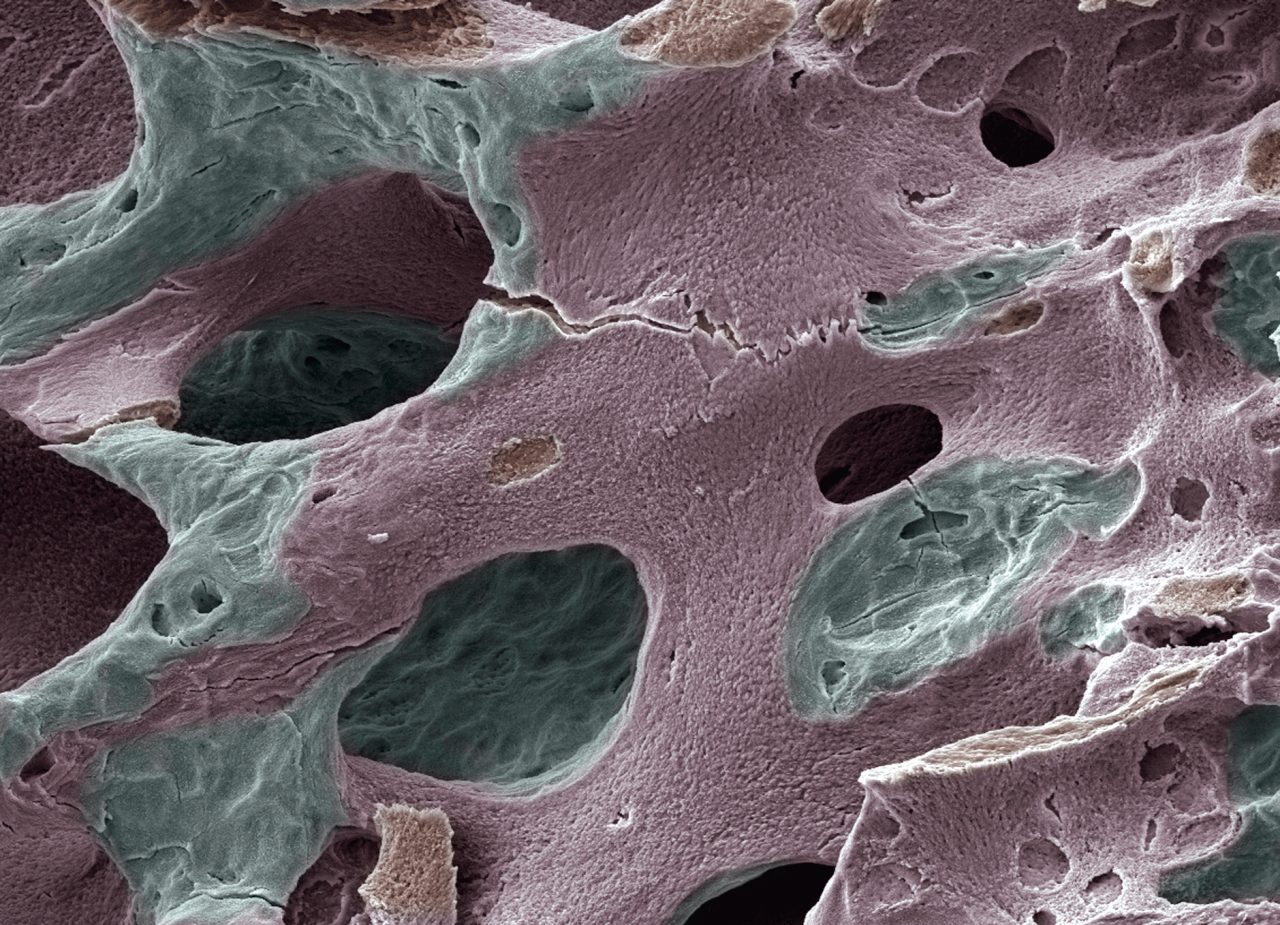What Is Osteoporosis?

What is osteoporosis? If you have osteoporosis, your bones can break easily. The condition is especially problematic for older people, both men and women.
What is osteoporosis?
A human bone looks like a honeycomb inside, with many tiny spaces. In people with osteoporosis, which is most common in older women, the spaces are larger than normal, and the outside of the bone is weaker and thinner.
That means you are at greater risk of breaking a bone — particularly a rib, hip, wrist, or part of your spine. In severe cases, you could break a bone from just a strong sneeze or cough.
Most people don’t know they have osteoporosis until they break a bone during ordinary activities. But there can be early signs: receding gums, brittle nails, and a weak grip. Osteoporosis runs in families, so if you know, for example, that your mother had it, be on the alert.
If you don’t treat osteoporosis, you might end up with chronic back or neck pain or even become shorter. One of the vertebrae in your neck or back could break under normal pressure. If you fall, you are more likely to break a hip. At least one in four Americans ages 65 and up falls each year.
YOU MIGHT ALSO LIKE: Osteoporosis Risk Factors
What are the causes of osteoporosis?
The thyroid hormones have an important role in building bones. Either too much or too little thyroid hormones can make your bones less dense over time.
Some medications, such a prednisone or cortisone, can weaken bones.
The biggest risk factor is age. Your bone density peaks at around age 35. After that, your bones break down faster than you can build new tissue, so your bones become less dense. After menopause, women lose bone more quickly than men do.
According to the Centers for Disease Control and Prevention, about 5 percent of men 65 years of age and over have osteoporosis of the neck or lower back, compared to more than a quarter of all women in that age group.
Whites and Asians are more at risk. So is anyone who is small-boned and light or inactive. Quit smoking and get exercise if you are worried about your bones, especially if you have a family history of the disease.
After menopause, women should have a bone density check — a painless x-ray.
In one large study, women with normal bone density at age 67 had a 1 percent chance of developing osteoporosis over the next 15 years. With mildly low density, the chance was 5 percent, so it might be safe to wait 15 years before your next test. But if bones are any weaker at 67, women might need a test within five years or even every year.
The term for weak bones that may develop osteoporosis is osteopenia.
What you can do
Once you have osteoporosis, you might need to:
- Take medication — a group called bisphosphonates that includes alendronate (Fosamax) and risedronate (Actonel)
- Eat more food containing calcium
- Take supplements and vitamin D
(Make sure your doctor knows what you are taking, as supplements can interact with your medications or harm you.)
Women may take estrogen or a medication called raloxifene (Evista), and men may take testosterone. Other drugs given by injection can help.
Don’t neglect exercise. Older people sometimes become afraid of falling during exercise, but research shows that exercise prevents the chance of a fall-related injury even in people 80 and older.
Besides the benefits for your overall health and mood, weight-bearing exercises will make you stronger. Try climbing stairs, doing squats and push-ups, and working with resistance bands or weights.
When your muscles push and pull against your bones, the natural reaction is to form new bone tissue. Any improvements in your balance and flexibility will also help you avoid falls.
There is a reason elders are afraid of falling. It takes longer for bones to heal when you are older. If you have to stay in bed, you raise your risk of blood clots and pneumonia. If you are living alone, you may not be able to continue on your own.
Updated:
July 13, 2023
Reviewed By:
Janet O'Dell, RN